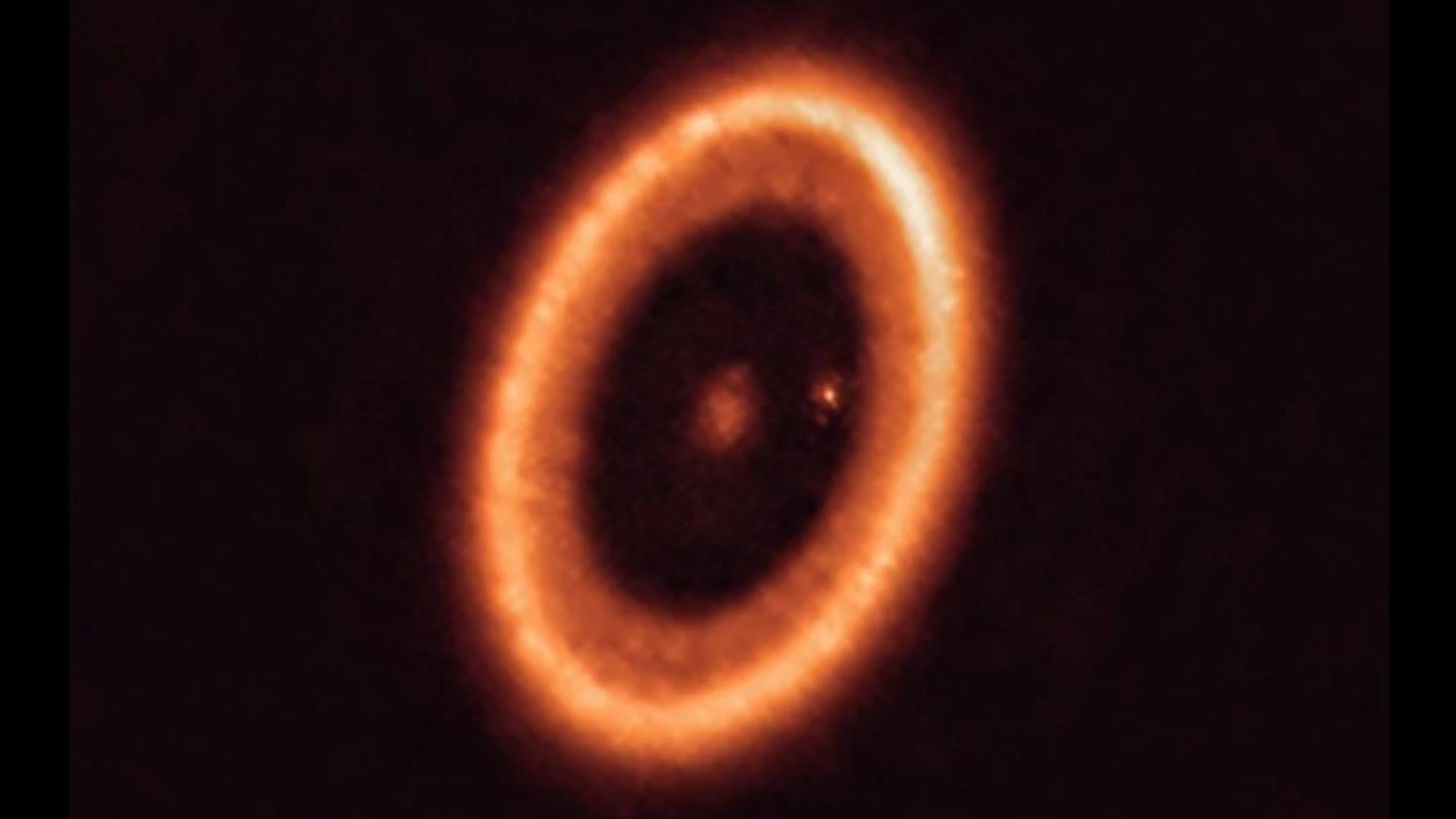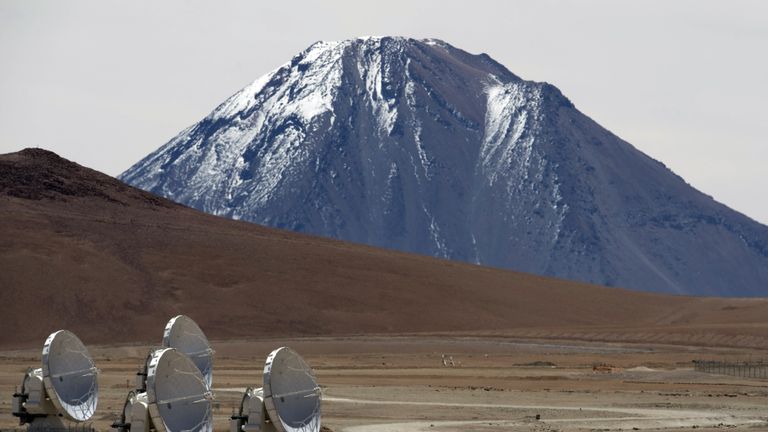Scientists have captured an image of a circumstellar disc, and within it a planet with a moon-forming disc, that looks like the Eye of Sauron from the Lord of the Rings cinematic franchise.
Observations of the system, nearly 400 light years away in the constellation Centaurus, reveal a planet within the circumstellar disc called PDS 70c that has another disc around it, approximately 500 times larger than Saturn’s.
The exoplanet was first directly imaged using infrared wavelengths in 2019, but a new observation from the Atacama Large Millimeter/submillimeter Array (ALMA) in Chile has revealed the construction in even more detail.
The European Southern Observatory (ESO) has clarified that the ring visible in the “Eye of Sauron” image is not the new planetary disc, which is only visible as a spot of light in the image above.
PDS 70c is one of two Jupiter-like planets orbiting the star, but until recently astronomers were unsure whether the gas giants had discs forming around them or not.
“Our work presents a clear detection of a disc in which satellites could be forming,” explained Dr Myriam Benisty, who led the research published in The Astrophysical Journal Letters.
“Our ALMA observations were obtained at such exquisite resolution that we could clearly identify that the disc is associated with the planet and we are able to constrain its size for the first time,” Dr Benisty added.
To date astronomers have discovered more than 4,000 exoplanets – planets orbiting distant stars – but all of them have been detected in mature systems.
The two planets, PDS 70b and PSD 70c, are the first to be discovered that are still in the process of being formed – meaning they offer astronomers insight into planet formation as well as how moons are made.
Planets are believed to form in the dusty discs surrounding young stars, carving out cavities in these discs as they gobble up material to grow.
In doing so, the planets can acquire their own discs which contributes to their growth by regulating the amount of material falling on to it.
“At the same time, the gas and dust in the circumplanetary disc can come together into progressively larger bodies through multiple collisions, ultimately leading to the birth of moons,” explained ESO, although these processes are not yet fully understood.
The PDS system “offers us a unique opportunity to observe and study the processes of planet and satellite formation,” explained ESO Research Fellow Stefano Facchini.


